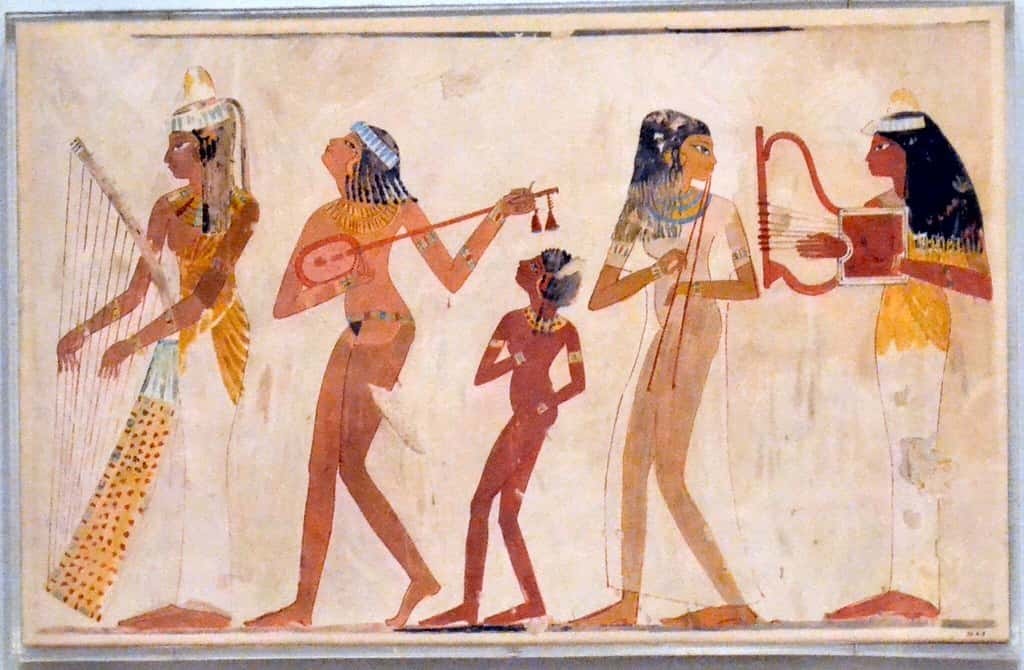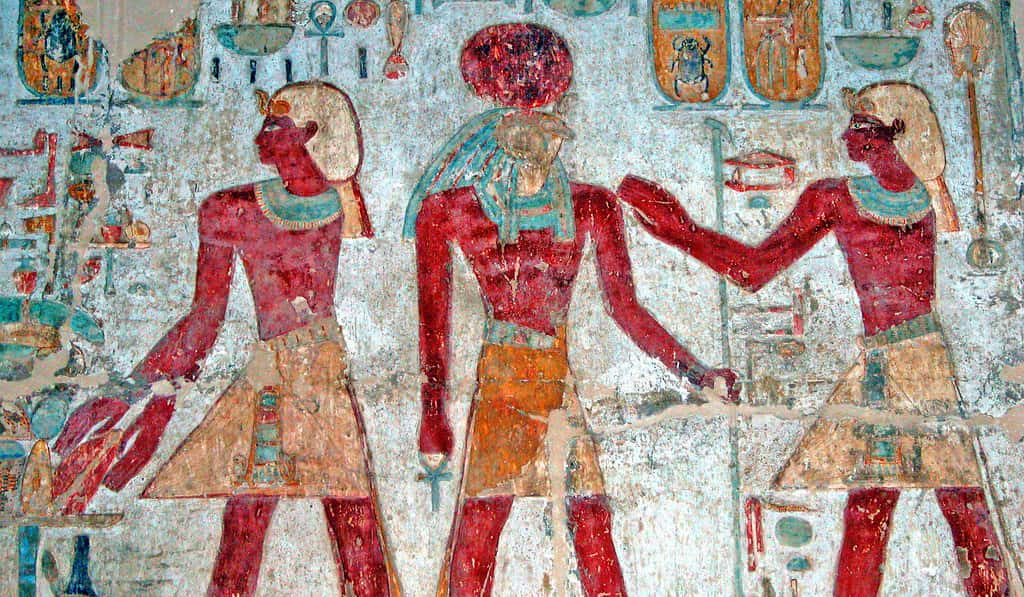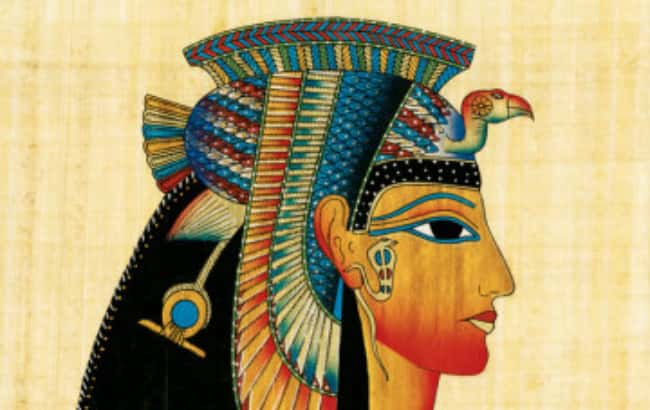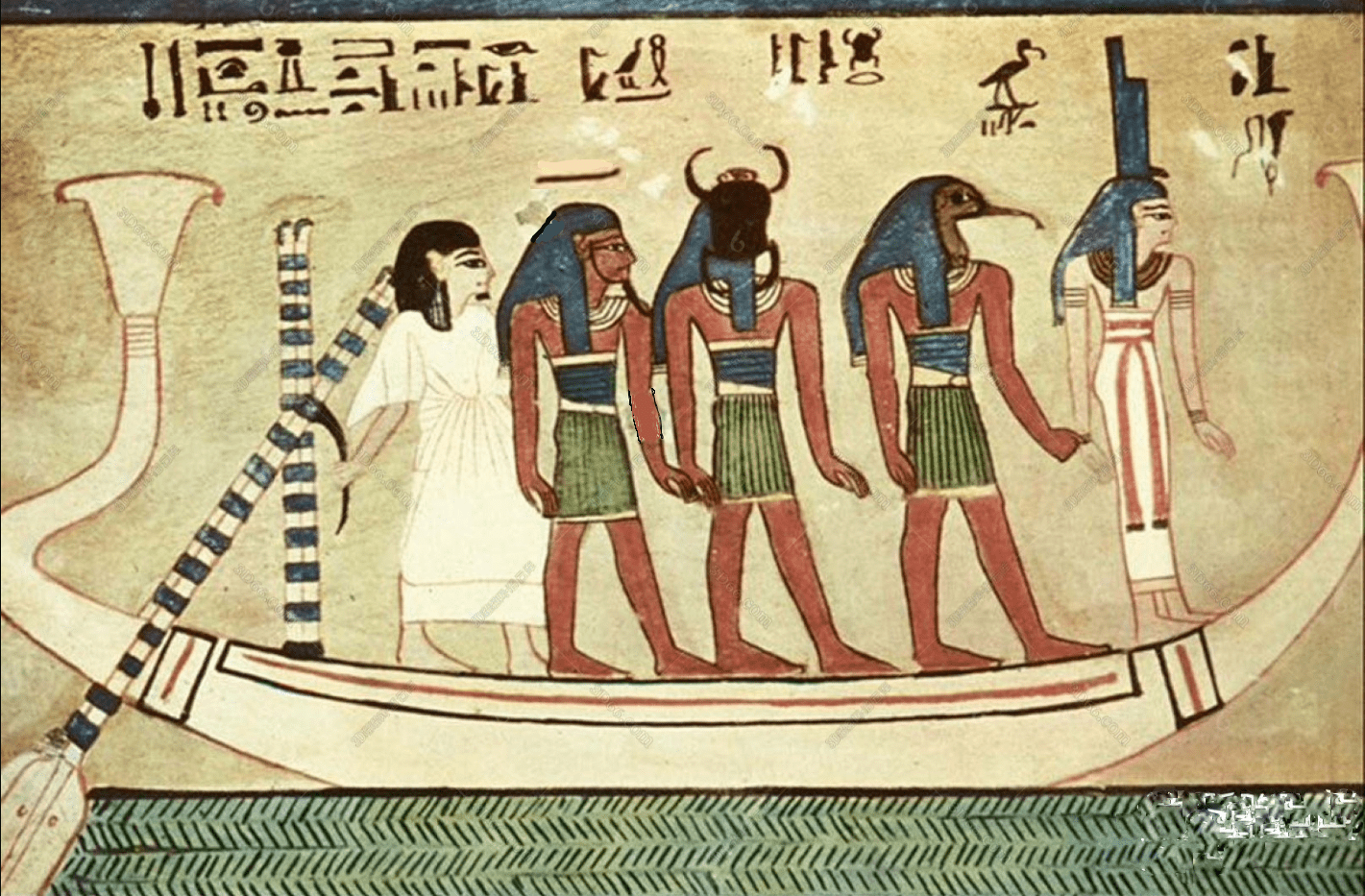“Every time someone ends a prayer in the Western world they say Amen—that is the name of an Egyptian god associated with completion. So we're still praying to their gods".—Whitley Strieber.
“Even if these stories are 3,000 years old, there's still so much about the characters, about the dilemmas, about their understanding of the universe that still resonates. The whole idea of order and chaos, which is really central to the ancient Egyptian understanding of the world, is still very much with us".—Rick Riordan.
Horus, Anubis, Ra. The names might be familiar, but we likely don’t know as much about them as we do about Zeus or Mars. They might not get as much love as the Romans or Greeks, but the Egyptians have their own fascinating pantheon of powerful beings who were highly-revered during their time. Here are 42 all-mighty facts about Egyptian gods and mythology.
42. Close Call
The God of Battle world took a jump from Greek mythology and delved into the Norse world with its latest installment. In a sad case of “maybe next time,” director Cory Barlog recently admitted that Egypt was a contender for the new setting and that they even made concept art for it.

41. Ain’t Nothing to Mess With
Gano Grills might not be a familiar name, but Wu-Tang fans might know him as the Clan’s graffiti artist. Grills also gained some notoriety for his role in Oz. On top of that, Grills is also known for claiming he is the human avatar of the Egyptian god Thoth and the Hindu god Ganesh. Perhaps because of his lofty aspirations, Grills is the figurehead of a cult that goes by the name of Galighticus.
40. Namesake
Isis conjures up headlines of terrorist attacks nowadays. However, Isis was also the name of one of the most worshipped Egyptian gods. Isis is the Greek name for the god of marriage, fertility, motherhood, magic, and medicine. Egyptians used the name Aset (alternatively spelled as Ast, Iset or Uset.) Isis was also known as “Hent (Queen),” along with a list of other names.
The Egyptian name roughly translates to “Queen of the Throne".
39. Reverse Centaur
Many of the Egyptian gods were depicted with animal heads and human bodies. The animal head was often used to illustrate the god’s characteristics. For example, Sekhmet’s lion head represented her courage and ferocity.
38. Bloodline
Like the Greek gods, some of the Egyptian ones also kept it in the family. Siblings Geb and Nun gave birth to Osiris, Isis, Seth, Nephthys, and Horus.
 Wikipedia
Wikipedia
37. Both Ways
Ra is viewed as the first god, but Ra’s qualities were often combined with other gods. This led to gods such as Atum Khepri (the rising sun god) and Atum-Ra (the sun god). Eventually, the prefix of Atum was dropped, leaving the gods we might be more familiar with. Atum is now considered an embodiment of all the other gods.
Like Ra, Atum has no parentage. His myth states he created himself from a small earthen hill that emerged from Nu, the primordial water.
Even better, Atum is sometimes known as the “great he-she".
36. Humble Abode
Despite Anubis’s relative popularity, archaeologists are still waiting to find any temples dedicated to the god. Since Anubis was known as the god of embalming, his shrines are commonly found in tombs and cemeteries.
In ancient Egyptian, Anubis was called Anpu or Inpu. Inp means to decay, and Anubis was also known as “imy-ut” or “He Who Is in the Place of Embalming,” and “nub-tA-djser” or “lord of the sacred land". Although some pop-culture adaptations frame Anubis as a sinister god, the ancient Egyptians generally viewed him as a guardian of the perished.
35. The Creed
The Egyptian pantheon makes another pop-culture appearance in an Assassin’s Creed: The Curse of the Pharaohs. The expansion pack features the main character, Bayek, in ancient Thebes. The gods don’t take kindly to their tombs being robbed by the townspeople and the titular plague is the result. It’s then up to Bayek to recover the stolen items and restore peace. Each boss battle is a battle in the afterlife with one of the Egyptian gods.
34. Mix and Match
Due to Greek occupation of Egypt, the two cultures began to blend. The name Anubis is believed to be a Greek creation. The Greeks also combined the Greek god Hermes and Anubis to create a new deity, Hermanubis. Since Hermes was a messenger of the gods, and Anubis guided the passed to the gods, the Greeks figured they were a match made in heaven—or Olympus.

Sign up to our newsletter.
History’s most fascinating stories and darkest secrets, delivered to your inbox daily. Making distraction rewarding since 2017.
33. Jolly Green Giant
Osiris is known as the god of vegetation. The god was often painted with green skin to symbolize new growth.
32. Librarian
Thoth had power as a judge of good and evil for the gods, but his main duty was being the scribe of the underworld. The god of wisdom, writing and magic maintained the library of the gods and wrote The Book of Thoth, which contains the secrets of the universe.
31. It Looks Like a Jackal
Anubis is often depicted with the head of a jackal, and is always black since the color was connected to rebirth.
Jackals are believed to be the animal of choice for Anubis due to their scavenging habits. Jackals were also known for living on the edge of the desert, where cemeteries were located. Hence the association with the passed and the belief that jackals are guardians of the people who passed.
30. Wingman
When are we most vulnerable? During childbirth, childhood, intercourses, and sleep. That’s why the ancient Egyptians were lucky to have Bes at their back. Bes was a dancer and musician who used his skills to protect his worshippers during their most vulnerable moments. Bes also offered protection from snakes. Sign me up.
29. Ancient LeBron
Nut is best known as the god who swallows the setting sun (Ra) and then gives birth to him every morning. Seems stressful.
Since Nut is viewed as the god of the sky, her physical form is an elongated human one. The long limbs are meant to demonstrate her ability to stretch over the earth.
28. Universal
In the second century novel The Golden A*s (yes, really) the protagonist is turned into a donkey. It is Isis who comes to his rescue. The protagonist, Lucius, later joins her cult and the cult of Osiris. The work is Roman but Isis captures the fluidity of the cultures when she says: “All humanity worships me in a thousand forms, with different names and many rituals and prayers".
 Wikimedia.Commons
Wikimedia.Commons
27. Overpowered
Seth has his own counterpart in Marvel comics. Like the historical version, his aim is the throne. The comic Seth wants to rule the entire multiverse and is equipped with the power to absorb the powers of mortals and other gods. Seth also wields hellfire, similar to Ghost Rider.
26. Ms. Cleo
Ancient Egyptians tended to associate royalty with gods, such as the aforementioned belief that the pharaoh was Horus.
Cleopatra III also strongly identified with Isis and Cleopatra VII (the Cleopatra) was sometimes referred to as the “new Isis".
 Flickr
Flickr
25. Tough Crowd
Greece has a Sanctuary of the Egyptian Gods, which was first founded in 160 AD by Herodes Atticus. The sanctuary housed statues of gods such as Iris and Osiris, but both of these statues were beheaded in May 2018. Some interpret the act as an attack on a culture viewed as foreign. Fortunately, the original statues are kept in the Archaeological Museum of Marathon.
24.Brew O’ Clock
The sun God Ra, like the Old Testament God, learned humanity was plotting against him and figured we needed some punishment. Ra sent Sekhmet, his lion-headed daughter, down to dole out vengeance. Sekhmet got a little carried away and Ra had to get her tipsy off of red brew, the next best thing to the blood she craved. Once Sekhmet fell asleep, she became a peaceful cat.
 Wikimedia.Commons
Wikimedia.Commons
23. Kitty
Ancient Egyptians arguably loved cats more than modern society does.
The Smithsonian’s National Museum of History actually opened its own exhibition to illustrate how important cats were to ancient Egypt. “Divine Felines: Cats of Ancient Egypt” features statues, amulets and more of the furry creatures, and also provides insight into cats’ role in ancient Egyptian society.
Cats dual nature as docile and aggressive—some would argue it’s just the latter—led to the Egyptians associating them with the gods. Cats were also valued for their loyalty and independence. Egyptians would sometimes name their children after cats as well—Miit (cat) was a popular girl’s name. Cats were also sacrificed to the gods, after which they would be mummified and receive an elaborate burial.
22. History Buff
H.P. Lovecraft, one of the most famous authors (and racists) in the world loved Egyptology and used Egyptian lore as an inspiration in his work Nyarlathotep. The tale tells the story of the titular sorcerer, who is resurrected and brings inter-dimensional beings to Earth.
 Flickr
Flickr
21. Going Strong
We’ve all heard the theory that aliens built the pyramids and other structures such as Stonehenge. The theories are still going strong.
Back in March 2018, digitally altered photos of the pharaoh’s sarcophaguses emerged. The altered photos changed some of the features, making them look more alien. The “aliens” argument was slightly changed, to say that the pharaohs were alien hybrids who passed down their advanced knowledge to their people.
20. Make it Rain
The Egyptian gods have inspired their own set of coins. The Egyptian God series by Provident Metals has three coins so far. Provident’s first piece was actually of Cleopatra (not quite a god), while the second was of Anubis. The third was of Sobek and the fourth was of Khnum. Sobek and Khnum are still on sale, but Anubis and Cleopatra were sold in limited quantities, with both having less than 20,000 coins.
The coins are two ounces of silver and feature the god on one side. The other side shows the animal associated with the god and an Egyptian pyramid. In the case of Cleopatra, her flip side showed Isis.
19. Egyptian Coin Toss
University of Copenhagen researchers are currently working on translating a slate of ancient Egyptian papyrus manuscripts. One of the documents, a medical text from the Tebtunis temple library, is a small piece of paper. The paper offers two possible outcomes for a situation, and the author was asking the gods for the right one.
18. So Hot Right Now
Aten, AKA “the sun disk,” actually looks like what you would expect: A faceless sun, with his rays ending in tiny hands.
Aten is relatively obscure now but Pharaoh Akhanaten (1352 -1336 BC) loved Aten so much that he abandoned the other gods and built a new capital city. Horizon of the Aten (modern Amarna) was dedicated solely to Aten. After Akhanaten’s passing, the temples of the other gods were reopened and Aten lost his status.
17. Gender Swap
Although Osiris is the god of vegetation, the earth itself is a man in ancient Egyptian mythology. Geb represented the land itself and the graves inhabiting the land. Like Osiris, he is green (and without clothes). Some depictions also have grain growing from his back, just to drive the point home.
 Shutterstock
Shutterstock
16. Rearing Its Head
We’ve all seen the headdresses that pharaoh’s tombs have, with the frill expanding on either side. It is called the uraeus and is meant to emulate the upright form of a cobra.
The Nile regularly flooded in late summer, and the rodents who fled the waters would make their way into settlements. This attracted cobras, who were then associated with the Nile’s fertility. The cobra goddess Renenutet is known as “she who flourishes". Like the cobra, Renenutet was valued as a caring mother and fearsome bodyguard: She protected the king after hi was gone as a fire-breathing cobra.
15. Thanks, Great One
Taweret, AKA “the great female one,” was regarded as the protector of women during childbirth. She was said to ward off any harm from the mother or baby. Like Anubis, Taweret had no temples, but her image is commonly found in private homes, often on jars or headrests.
Also, she had the body and head of a pregnant hippopotamus, the tail of a crocodile and the limbs of a lioness. Sometimes, she was depicted with a human face.
14. Gold Rush
A statuette of Osiris was found in the pyramid of Djoser, a pyramid considered to be as important as the pyramids of Giza, back in July 2018. It’s about 63cm (25”) tall and 15cm (6”) wide. The bronze statuette was found during routine restoration work, in a small hole in the pyramid’s foundation. The statuette shows Orisis with a sceptre in one hand and a feather in the other. Archaeologists are puzzled by the statuette’s location since Osiris is one of the most important gods, and the statuette was placed in an empty incision between two huge granite blocks.
 Wikimedia.Commons
Wikimedia.Commons
13. Superstition
The ancient Egyptians are the culprits when it comes to one theory about the origin of the “nine lives” cat myth. The sun god Atum-Ra, would transform into a cat to visit the underworld. According to legend, Atum-Ra also fathered eight other gods, hence a cat having nine lives.
12. Fury Road
In 2017, the third annual Catharsis on the Mall was held. It’s a festival that evolved from Burning Man. Held from November 10 to 12 in Washington, DC, the event offers a politically oriented display of art, music, workshops, exhibits etc. One of the big attractions was a 70-foot long seven headed red metal dragon on wheels. The dragon’s look references the description of Satan in the Book of Revelations, but its name came from an Egyptian god: Abraxas. The event led Rabbi Yosef Berger to warn that paganism was returning.
11. Scarab Man
The scarab beetle is known for rolling a ball of dung around, which inspired the image of a huge celestial beetle rolling the sun across the sky.
This led to the god Khepri’s role as the morning sun, pushing the yellow ball across the sky. As expected, Khepri was often depicted as a beetle, a beetle-headed man or a beetle-headed falcon.
v
10. Hail the King
Ra is probably the most popular Egyptian god nowadays, and he was the most popular in ancient Egypt as well. Mythology credited the sun god with creating the world, making him the most important god to his followers, sometimes being known as the King of the Gods. Ra was self-created, lacking any parents. One of the myths surrounding his birth says he was birthed from an egg that emerged from the darkness.
Ra is also the God who is literally eaten by Nut (the sky) every night and spat out in the morning.
 Flickr
Flickr
9. Built to Last
In total, Egyptian gods were worshipped for around 3,000 years. Not bad at all, considering Christianity is only about 2,000 years old now.
8. Fusion
Amun-Ra is actually a blend of the god Amun and the sun god Ra.
A new pharaoh would often elevate his local god’s status by making it the national god when he was in power. Hence Amun, the local god of Thebes, became the national god of Amun-Ra.
 Flickr
Flickr
7. Wakanda Forever
The god Bast, or Bastet, makes an entry in the Marvel Cinematic Universe (MCU) as the god that Wakandans worship. Bast’s film appearance is somewhat altered to make her a panther god.
Bast and Sekhmet are one in the same since Bast was known as Sekhmet in Upper Egypt.
As Egyptian history progressed, Bast was commonly depicted with the head of a cat, instead of the original appearance of a lion.
6. Competition
Some gods, such as Ra, were nationally revered. However, the reverence for other figures could shift drastically from city to city. Sobek, the crocodile god, was so revered in Arsinoe that the Greeks called it “Crocodilopolis” or “Crocodile Town".
The ancient Egyptians, in total, had over 2,000 gods that were worshipped. Most were not known outside their hometowns.
5. Hallelujah
Sobek was the god a very specific domain. His Nile crocodile head represented the Nile crocodiles that travelers feared. Praying to him was meant to keep them safe from being hurt by the creatures.
In true Bond villain fashion, many temples kept live crocodiles in their pools to show reverence for the god.
4. No Pressure
Ammit was one of the most feared gods in ancient Egypt. She had the head of a crocodile, the torso of a lion (or leopard) and the legs of a hippopotamus.
Ammit was known as the “eater of the damned” due to her main role. When someone was gone, it is said their heart was weighed on the scales. One side of the scales held the ended person heart, the other held the feather of truth. The hearts that were lighter than the feather, allowed their owner to pass into the afterlife. You can guess what happened if their heart was heavier than the feather.
3. From the Grave
Osiris was married to his sister, Isis. The happy union was disrupted when Osiris was ended by his brother, Seth. Osiris was imprisoned in a chest, and the chest was then thrown into the river. Isis then used magic to bring Osiris back to life and the two conceived their son, Horus. Horus would go on to avenge his dad’s passing. Due to this story, pharaohs were viewed as the embodiment of Horus when alive. Egyptians also believed the pharaoh would take Osiris’s role upon passing.
2. The Missing Piece
Seth ended Osiris by creating a chest, or container, made for him. During a dinner party, Seth offered that whoever could fit in the chest, would get to keep it as a present. As expected, Osiris fit, and Seth and his accomplices nailed Osiris in and threw his body in the river. Seth later found the chest and Osiris’s body during a hunting trip. Seth was triggered and cut the body into fourteen pieces, before scattering those pieces across Egypt.
We know Isis brought him back, but one piece of info that is particularly interesting is that a fish ate Osiris’s weenie. Isis found the other thirteen pieces but made her hubby a new package.
1. All Eyes On Me
We’ve probably seen the Eye of Horus on a T-shirt or a tattoo at some point. The eye is viewed as a good omen, protecting the wearer from evil and envious people—AKA, the haters.
In a later battle with Horus, Seth got hold of one of Horus’s eyes and ripped the eye apart. Seth settled for six pieces this time, instead of fourteen. The goddess Hathor restored Horus’s eye and Horus went on to defeat Seth—about time!
Afterward, Thoth found the scattered pieces of Horus’s original eye and restored that as well. Horus then gave his old eye to his dad to bring him back to life, allowing Osiris to become the ruler of the underworld.
The eye was often painted on coffins so that the passed person could look through the coffin. There is also speculation that the symbol for drug prescriptions, Rx, is an altered Eye of Horus. However, other theories say it is an abbreviation of the Latin word for recipe.
Sources: 1, 2, 3, 4, 5, 6, 7, 8, 9, 10, 11, 12, 13, 14, 15, 16, 17, 18, 19, 20, 21, 22, 23, 24, 25, 26, 27, 28, 29, 30, 31, 32, 33, 34, 35, 36









































